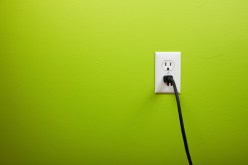Cutting the Cord: Do You Really Need Cable with a Smart TV?
In recent years, the rise of streaming services and smart TVs has led many people to question whether they still need a traditional cable subscription. With a smart TV, you can access a wide range of content directly from the internet, eliminating the need for cable boxes and monthly cable bills. In this article, we’ll explore whether you really need cable with a smart TV and discuss alternative options for streaming your favorite shows and movies.
The Rise of Smart TVs
With advancements in technology, smart TVs have become increasingly popular. These televisions are equipped with built-in internet connectivity that allows users to access various online services directly from their TV sets. This means you can stream content from platforms like Netflix, Hulu, Amazon Prime Video, and YouTube without needing an additional device.
Smart TVs also come with app stores where you can download additional streaming apps or games. This versatility makes them an attractive option for those looking to cut the cord on traditional cable subscriptions.
Accessing Content on Smart TVs
One of the main advantages of owning a smart TV is the ability to access content without relying on cable providers. Most smart TVs have dedicated buttons on their remote controls that allow users to launch popular streaming apps instantly. Additionally, these televisions often come equipped with voice control features that make it even easier to navigate through different apps or search for specific content.
By connecting your smart TV to your home’s Wi-Fi network, you gain access to countless hours of entertainment without needing a cable subscription. However, it’s important to note that not all streaming services are free; some require separate subscriptions or may have premium content behind paywalls.
Alternative Streaming Options
If you decide to cut the cord and rely solely on your smart TV for entertainment, there are several alternative streaming options available. Many popular streaming services offer standalone subscriptions that allow you to access their content without a cable subscription. These services often provide a wide range of TV shows, movies, documentaries, and even live sports events.
Some popular streaming services include Netflix, Hulu, Amazon Prime Video, Disney+, and HBO Max. Each service has its own unique offerings and subscription plans. It’s worth exploring these options to find the ones that best suit your entertainment preferences.
Considerations Before Cutting the Cord
Before completely cutting the cord and canceling your cable subscription, there are a few considerations to keep in mind. Firstly, check whether your internet service provider offers fast and reliable internet speeds. Streaming high-definition content requires a stable internet connection with sufficient bandwidth.
Secondly, evaluate your viewing habits and the channels you typically watch. While many cable channels now offer standalone streaming options or have partnerships with streaming services, there may still be some exclusive content that you won’t be able to access without a cable subscription.
Lastly, consider any bundled services or discounts that you currently receive from your cable provider. Sometimes it may be more cost-effective to keep certain bundled services rather than paying separately for each streaming service.
In conclusion, owning a smart TV provides numerous options for accessing content without needing a traditional cable subscription. With the rise of streaming services and dedicated apps for smart TVs, cutting the cord is becoming an increasingly viable option for many households. However, before making the switch, it’s important to evaluate your viewing habits and consider factors such as internet speed and bundled discounts to ensure that cutting the cord is the right decision for you.
This text was generated using a large language model, and select text has been reviewed and moderated for purposes such as readability.





